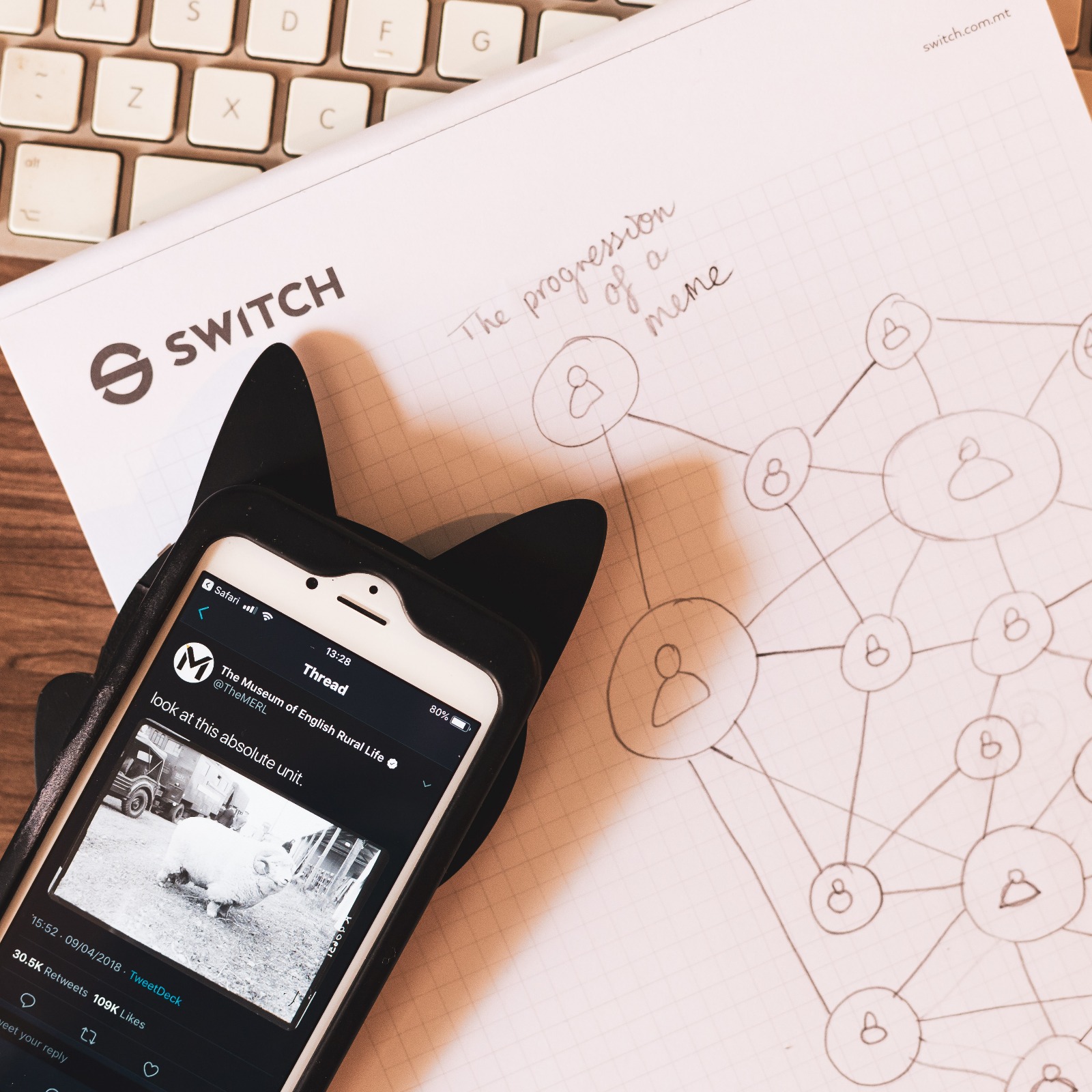We’ve all been there: you try and get on the bus, only to slip and fall, or you walk out of the bathroom with toilet paper stuck to your shoe, or you try to stop racism with carbonated sugar water and completely miss the mark.
The internet runs with it, and it takes you a year to recover from the backlash.
When viral marketing goes well, it goes very, very well. Conversations, mentions, retweets, and likes for your brand skyrocket, and you’re left gearing up to try and figure out what to do with that increase in revenue.
When viral marketing goes bad, however, it goes very bad, all at once.
Virality
Brands that go viral aren’t a new beast. Brands have been ‘going viral’ for years, only back then it was called ‘pay thousands in advertising to make sure your product is associated with a better world even when it gives you cancer/heart disease/an overwhelming mountain of debt’.
That’s why diamonds are associated with everlasting love and cigarettes are linked to ‘being cool’. It’s all just smoke and mirrors advertising – all it does is reflect the notion that what you want to see is only available through that certain product, or experience, or clothing style, or whatever else Mad Men copywriters shilled in those days.
We’ll be talking about this a bit later on, but for now let’s focus on virality that undermines brands – when their slam-dunk commercial turns into a bounce-off-the-hoop-and-hit-you-in-the-face flop, or bad publicity gets compounded by the CEO bad-mouthing critics on a public forum, or even just a case of ‘yikes, you really didn’t think it through, did you?’
Bad Publicity and You
They say there’s no such thing as bad publicity: maybe that was true before people could dig through 50 years of advertising history to see if your brand values and their morals compared. Nowadays, a bad message is harder to stick in the attic and forget.
Note: we’re not talking about bad publicity as any kind of bad publicity! People disagreeing with what your brand stands for is kind of to be expected… to a certain extent.
However, it’s become overwhelmingly clear that the greater majority of the internet is immensely critical of brands. Ads that don’t echo their specific worldview get torn apart – but then it’s up to case-by-case basis.
Nike’s Kaepernick ad, for example, resonated strongly with protesters attending marches against police brutality, and particularly with people of colour who are overwhelmingly at risk to get stopped, patted down, and detained using extreme force. The ‘bad publicity’ that Nike’s Kaepernick ad garners pales in comparison to the good publicity – when the only thing people can say about your ad is ‘I’m racist and I don’t like being told it’s bad for police to kill people of colour’, you can kind of see what we mean.
However, there are no such feel-good stories here: these are the ‘why on Earth did you do that?’ moments of 2018 that made the news for all the wrong reasons.
Dolce & Gabbana – China
Brace yourselves, because this isn’t the first fashion-related disaster we’re going to cover in this article, but this is arguably the one that was (1) easiest to avoid and (2) made the biggest splash in terms of ‘what the hell were you thinking?’
Question: how do you like your fashion? If it’s your dying wish to look like an anthromorphised card table or a reprint of a knockoff Andy Warhol, then Dolce & Gabbana has your back! Want to look like your late grandmother’s curtains? It’ll only cost you €5950 – a steal if you want to rock that late 90s printed polyester vibe.
If, however, you want your fashion a little less steeped in racism, you might want to go somewhere else. Apparently Dolce & Gabbana’s creative designers are reanimated corpses from Victorian England, and missed the entire 2000+ years of history China had before the First Opium War.

Hint: this isn’t the first time D&G have missed the mark with their Chinese consumers.
Dolce & Gabbana is pretty much what you’d expect: it’s a high-fashion, high-luxury company which was relevant in the 1990s, and has since fallen to the wayside with the rest of the high-fashion, high-luxury companies that millennials can’t afford.
They did some good stuff – the Sicilian dress and their Rhinestone Cowboy aesthetic made them very popular choices for movie premieres and the stars that went to them. They also did some very stupid stuff – and unfortunately, their stupid stuff is a matter of public record. Here’s a list of previous controversies that Dolce & Gabbana have been involved in:
- Released a high-fashion gang-rape fashion ad. When criticised and forced to pull the ad, the two of them responded, ‘Spaniards are a bit backwards’.
- Called IVF babies ‘synthetic’, and said they were against gay adoption, citing that the only family is a ‘traditional one’. They also opposed surrogacy, saying, “life has a natural flow, there are things that should not be changed.” When questioned, they said: “Yeah, I don’t have anything bad, because the beauty of the world is freedom…We love gay couple. We are gay. We love gay couple. We love gay adoption. We love everything. It’s just an express of my private point of view.” We don’t think it works that way, Dolce.
Both of these led to the creation of #BoycottDolceGabbana, which seems to be trending every other Monday.
These were the ‘blow over’ mistakes that Dolce & Gabbana made; within a few months, people stopped talking about them, and went back to their usual tried and tested method of ignoring any high-fashion brand where a pair of shoes costs roughly half a month’s rent for a one-bedroom Sliema apartment with a shared bathroom.
And then Dolce & Gabbana released this:
We’ll let you absorb that for a minute.
And now we’ll let you absorb the fact that the Chinese market is one of the most lucrative fashion markets globally, and partly accounts for up to 30% of Dolce & Gabbana’s revenue. In March 2017, that added up to about €1.3 billion.
Can you hear that? It’s the sound of money getting flushed down the drain.
Backlash was instantaneous, with Chinese consumers calling for a boycott of Dolce & Gabbana’s upcoming runway show. Despite the video being taken off of Weibo in less than 24 hours, Chinese users were infuriated, and prominent Chinese actors, models, and business owners refused to attend the event – which is what you’d expect if you posted shit like this on your social media:
https://www.instagram.com/p/BqbTkY_FB7X/
Dolce & Gabbana has bounced back from every controversy that hit them before but this one doesn’t show any intention of winding down. The €1.3 billion loss is problematic enough, but also consider this: Dolce & Gabbana products disappeared overnight from Chinese e-commerce sites, and considering that China’s an up-and-coming market for luxury good stores to settle and skyrocket their earnings, Dolce & Gabbana’s future does not look bright.
US Air Force
Marketing 101: If you’re piggybacking on a currently trending meme, make sure you’re not involved in a war with over 1,000 civilian casualties. Definitely make sure you don’t tie that meme to a weapon of mass destruction. Definitely definitely make sure you don’t actually publish it.
The US Air Force published this tweet shortly after the debut video of ‘Yanny vs Laurel’, 2018’s ‘Blue or Gold dress?’ family-tearing debate.

‘Yanny vs Laurel’ is an audio recording where one person is saying a single word, except what that single word was was heavily up for debate. Two polar-opposite suggestions were made: Yanny and Laurel.
(Eventually it was discovered that the differences people heard all had to do with the frequencies that people heard, proving once and for all that magic is dead and science holds the smoking gun).
Thousands of people hopped onto the ‘Yanny vs Laurel meme’, including the White House, which practically amounted to a holiday for the official Suspension of Belief staffers in charge with making Tangerine Dream’s Twitter word salad mean something.
#Laurel? #Yanny? Or… pic.twitter.com/5hth07SdGY
— The White House (@WhiteHouse) May 17, 2018
Life was good, and everyone was happy. Then, the US Air Force used the tweet to pat themselves on the back for carpet bombing Taliban forces into smithereens, nevermind the civilians that got buried in the rubble alongside them, and the meme died.
Loudly.
With complaints to the Pentagon.
Here are a few of the reactions:
Military humor is always THE BEST, isn't it? Nice to take a break from, you know, killing people.
— tenacious b (@MamanUbu) May 17, 2018
Haha! It's funny because a bunch of people are dead.
— David Kleppinger (@DrKlep) May 17, 2018
I hope the military didn't spend too much of its missing 21 trillion dollars on its social media campaign, cuz they'd be overpaying at minimum wage.
— Jon P (@jp_in_nj) May 17, 2018
The U.S. Air Force didn’t have a great reputation before this, so it’s not like it’ll be the nail in the coffin of their social media career, but the Twitter outrage was enough that it taught everyone a valuable lesson about not combing light-hearted humour with bombarding a civilian target in order to Kill The Bad Guys (that you yourself armed and trained).
Victoria’s Secret
Victoria’s Secret hasn’t been positively relevant ever since it was Victoria’s Game of Telephone During a Sixth Form Party, so hearing controversy about a Victoria’s Secret runway show is a little bit like hearing Transport Malta say they’re doing roadworks: ultimately, it’s same shit, different day, and everyone goes on with their lives.
However, the general tried and tested pattern of ‘we sell factory-made chicken-breast-padded bras for anyone under a size ten’ hasn’t served them well for many, many, many moons.
It started with Victoria’s Secret getting lambasted for their Perfect Body campaign. This was the ad:

The campaign was to advertise their new line of bras. Allegedly, they were were made of the stuff of legends and could fit any body it was put on, provided you were tall, skinny, white, less than a DDD cup, and worked out for eight hours a day.
People responded with a Change.org petition for Victoria’s Secret to change the campaign and apologise, half of which the company actually did. In certain parts of the UK, the original campaign still ran, and Victoria’s by-women-for-women image slipped a little bit further.
In 2018, a fresh controversy swept this one out of the park. In an interview with Vogue, perma-tanned CMO Ed Razek answered that transsexuals would not walk the runway because the show is a fantasy.
Historically, fantasy movies where all people do is walk have done well, but those films had dragons and tree-people in them. The last time Victoria’s Secret brought out a dragon, it was wrapped around Elsa Hosk and made of paper, and did not do so great.
The full interview lasted for maybe ten minutes.
The outrage took off in ten seconds.
See, the thing is Victoria’s Secret has not managed to maintain the numbers that it needs to. Plus-size shoppers can’t shop there. People with moderate wages can’t shop there. Victoria’s Secret has staked it’s entire reputation on ‘sexy’, and people don’t want Victoria’s Secret brand of sexy anymore. Even before Razek’s remarks alienated their show performer Halsey, Model Alliance, their actual models, magazine editors, and anyone who’s self-aware enough to get out of the train before it careens off the tracks, Victoria’s Secret was suffering. Their lack of diversity, widespread sizing, expensive scrap-lace bras, and tone-deaf ad campaigns means that the show is getting fewer and fewer viewers every year, while competing brands like Savage x Fenty and Aerie are soaring to the light.
Victoria’s Secret, on the other hand, has been relegated to the shadows of perpetual sale hell, and nobody is talking about it except to illustrate the successes of other brands.
So what does this mean?
We’ve covered why you shouldn’t ask for viral content in our previous blog post, and that still stands. Going viral accidentally, on the other hand, is a completely different beast.
Going viral accidentally and negatively? There are better ways for your company to go down – negative viral content has a way of resurfacing, over and over again, ruining profits and breeding more discontent among consumers. Companies in crisis mode also have a tendency to panic and blurt out an apology, any apology, to try and put out the fire before it becomes an inferno; sometimes it works.
Other times, the negative virality is so strong that it doesn’t even make a dent.
How should you avoid going viral negatively?
Keep an eye on the story. Trends are changing, and audiences are demanding more from their companies. Companies can’t build their reputation on product alone, and sweep everything else underneath the carpet. Chances are, if your CEO doesn’t like selling clothes to ugly people, someone’s going to find out, and spread all your secrets on the internet.
Apologise honestly. Do better. Be better. Offer the same product with a better story. Be respectful. Be kind. The rules for not stopping the internet with an advert that’s been overwhelmingly divisive are pretty close to the rules to being a decent person. The internet isn’t your friend, no matter how close and comfortable and Y2K ready you were in the 90s; the internet is the gauntlet that all companies are run through now, that all profits depend on.
It’s a scary, scary, scary place – but it isn’t impossible to navigate.
The difference will always be in the story, and how it’s told.




